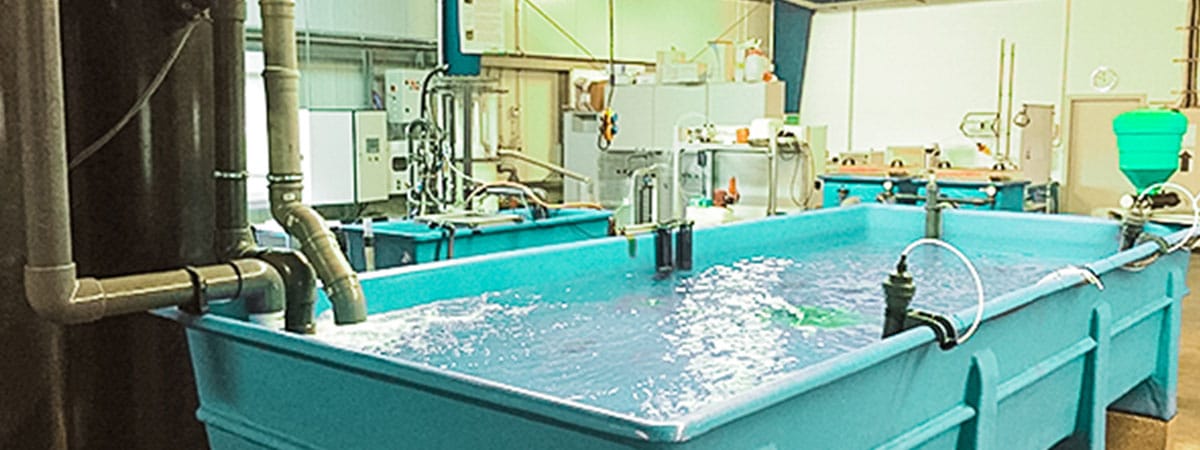Aquaculture Recirculation Systems

Besides traditional aquacultural cultivation methods like pond culture, net cages and raceways, the closed system called recirculating aquaculture system (abbr. RAS) has been established more and more during the last decades. This is the most modern and above all the most efficient option of all fish farms. Recirculation systems by definition have a daily water exchange rate below 10% of the whole water volume of the facility (EIFAC, 1986). Sustainable and elevated technological circulation systems, likewise the SEAWATER Cube, can even achieve a daily water exchange rate below 1% and are therefore especially resource-conserving. Unique features of this cultivation form are the complete independence of location, because there is no natural waterbody needed, as well as the separation from the environment. Through a continuous water treatment using physical and biological filter systems within the recirculation, a great water quality is achieved. Furthermore, the separation permits to avoid interactions with the environment and to save resources. Such extreme meteorological and hydrological occurrences (e. g. storms, waves or breakers), industrial risks (oil pollution, nuclear accidents) or biogenic hazards (toxic algal blooms) are considered no direct dangers for a RAS.
Other advantages are:
- consumer protection
- food safety
- reliability of the production process
- expanded portfolio
- sustainability
Due the on the animal welfare adapted water parameters as well as their constant control, higher stocking densities than in e. g. the conventional pond culture are attainable, without exposing the animals to unnecessary stress. The result is a considerably greater space efficiency and that is why a modern recirculation system only takes up around 1% of the area of a pond system, while producing the same annual amount.
A special kind of aquaculture in recirculating systems is aquaponics. It is a combination of aquaculture and hydroponics (crop growing without soil). With this integration, not only the water cycle is closed but also the nutrient cycle, because the water outlet of the fish farm is led into the plant patches. Crops like tomatoes, basil or eggplants are standing in an inorganic bedrock such as gravel or clay granulate and are extracting the nutrients from the freshwater. Under these conditions, the growth of plants is excellent, and they can filtrate the water up to this point, where the water can be led back into the fish tank without having to treat it any further.
Further informationen about the SEAWATER Cube
Check out more facts about our system and the technology.
References
— Waller, 2012. Aquakultur im Fokus. Hochschule für Technik und Wirtschaft des Saarlandes. Saarbrücken
— FAO (Food And Agriculture Organisation Of The United Nations), 2016. The State Of World Fisheries and Aquaculture. Rome
— Greenpeace: https://www.greenpeace.de/themen/meere/welche-aquakulturmethoden-gibt-es (Stand 21.02.2018)
— Timmons, M.B. & Ebeling, J.M., 2010. Recirculating Aquaculture. 2nd ed. New York: Cayagua Aqua Ventures